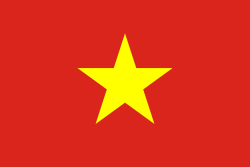| Vietnam at the 2015 Summer Universiade | |
|---|---|
 | |
| IOC code | VIE |
| NOC | Vietnam University Sports Association |
| in Gwangju, South Korea 3 – 14 July 2015 | |
| Competitors | 6 (3 men and 3 women) in 1 sport and 5 events |
| Medals Ranked 58th |
|
| Summer Universiade appearances | |
Vietnam participated at the 2015 Summer Universiade , in Gwangju, South Korea.